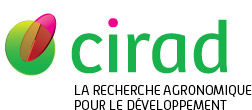Auffan Mélanie, Santaella Catherine, Brousset L., Tella Marie, Morel E., Ortet Philippe, Barakat Mohamed, Chaneac C., Issartel J., Angeletti Bernard, Levard Clément, Hazemann Jean-Louis, Wiesner M., Rose Jérôme, Thiery Alain, Bottero Jean Yves. 2020. The shape and speciation of Ag nanoparticles drive their impacts on organisms in a lotic ecosystem. Environmental Science. Nano, 7 (10) : 3167-3177.
|
Version Online first
- Anglais
Accès réservé aux personnels Cirad Utilisation soumise à autorisation de l'auteur ou du Cirad. 2020_Auffan et al_ESNAno.pdf Télécharger (2MB) | Demander une copie |
|
|
Version publiée
- Anglais
Accès réservé aux personnels Cirad Utilisation soumise à autorisation de l'auteur ou du Cirad. 598293-ed.pdf Télécharger (1MB) | Demander une copie |
Quartile : Q1, Sujet : CHEMISTRY, MULTIDISCIPLINARY / Quartile : Q1, Sujet : ENVIRONMENTAL SCIENCES / Quartile : Q1, Sujet : NANOSCIENCE & NANOTECHNOLOGY
Résumé : Silver nanomaterials with different shapes (spheres, plates, wires, rods, cubes) are valued by industries and scientists for their shape-dependent properties which make them useful for diverse applications. In a safer-by-design perspective, controlling the shape of Ag nanomaterials could be an option to increase their properties while lowering either their hazard or their exposure potentials. Nine indoor aquatic mesocosms reproducing a lotic ecosystem were contaminated with chronic low-level additions of Ag nanospheres (Sp-Ag) and nanoplates (Pl-Ag) for a month. A shape-dependent impact under such environmentally relevant exposure conditions was observed. Pl-Ag induced a moderate oxidative stress in adult Gammarus fossarum (after molting) and a hormesis effect on planktonic microbial communities, while Sp-Ag had no effect. In an environmental risk perspective, our results highlight which ecological niches of a lotic ecosystem would be more impacted by Pl-Ag: (i) >72% of the total Ag was found fully sulfidized in surficial sediment and had only a moderate impact on benthic macro-organisms, (ii) only 11% to 15% of the Ag remained in the water column after 1 month, but Ag was under a more reactive speciation that impacts the planktonic community.
Mots-clés Agrovoc : nanomatériau, argent, plancton, impact sur l'environnement, bioaccumulation, milieu lotique, stress oxydatif
Mots-clés complémentaires : Gammarus fossarum, mésocosme
Classification Agris : M40 - Écologie aquatique
P02 - Pollution
Champ stratégique Cirad : CTS 4 (2019-) - Santé des plantes, des animaux et des écosystèmes
Auteurs et affiliations
- Auffan Mélanie, CNRS (FRA) - auteur correspondant
- Santaella Catherine, CNRS (FRA)
- Brousset L., CNRS (FRA)
-
Tella Marie, CIRAD-PERSYST-US Analyses (FRA)
 ORCID: 0009-0006-8099-2936
ORCID: 0009-0006-8099-2936
- Morel E., CEREGE (FRA)
- Ortet Philippe, CNRS (FRA)
- Barakat Mohamed, CNRS (FRA)
- Chaneac C., CNRS (FRA)
- Issartel J., CNRS (FRA)
- Angeletti Bernard, Aix-Marseille université (FRA)
- Levard Clément, CNRS (FRA)
- Hazemann Jean-Louis, CNRS (FRA)
- Wiesner M., Duke University (USA)
- Rose Jérôme, CNRS (FRA)
- Thiery Alain, IMBE (FRA)
- Bottero Jean Yves, CNRS (FRA)
Source : Cirad-Agritrop (https://agritrop.cirad.fr/598293/)
[ Page générée et mise en cache le 2025-03-09 ]




